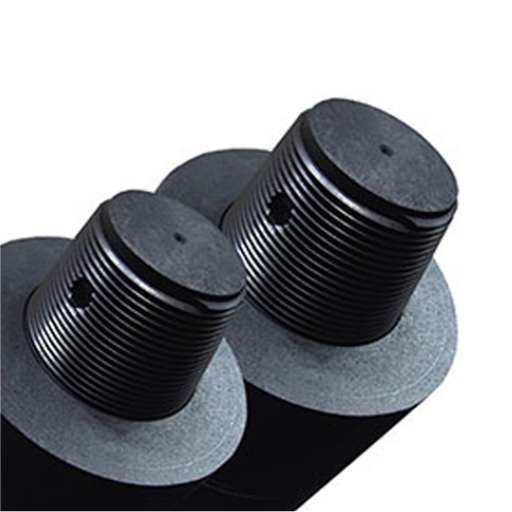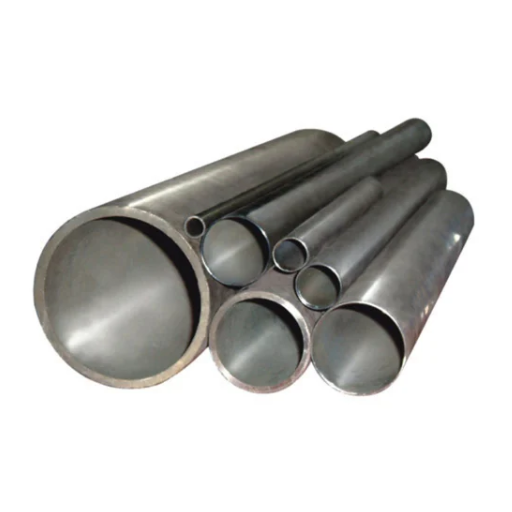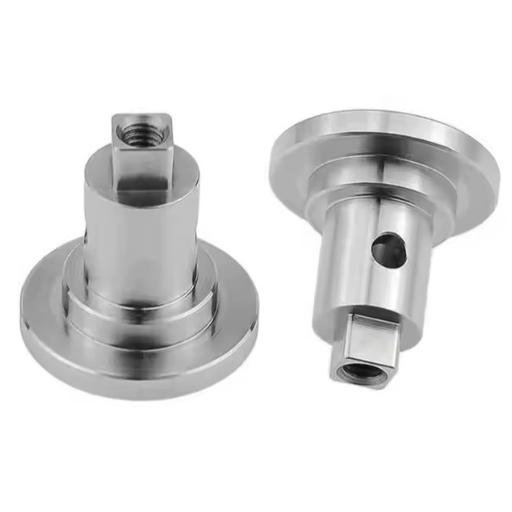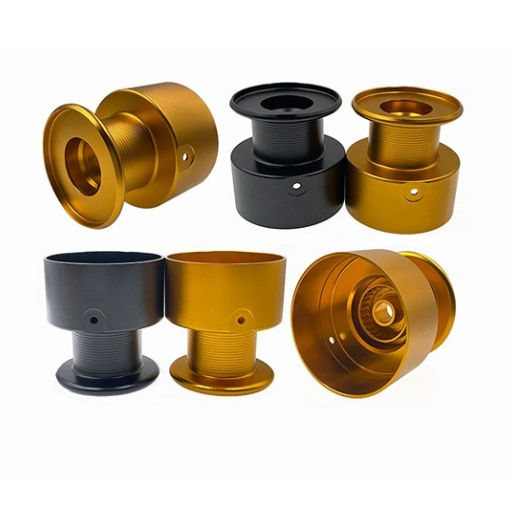Stainless steel is known for its strength, durability, and corrosion resistance. Moreover, it has widespread applications. But, does it measure up when it comes to conducting heat? The thermal conductivity of a metal is essential in many industries, from cookware manufacturing to engineering and construction. In this blog post, we delve into comparing stainless steel to other common metals – copper and aluminum. With us, you’ll understand the repercussions of the thermal conductivity of stainless steel on its applications to make better choices when it comes to material selection. We will guide you through the science of heat transfer and identify the unique traits of stainless steel.Click here to read more
What is the Thermal Conductivity of Stainless Steel?
Stainless steel does not have the same level of thermal conductivity as aluminum and copper. Moreover, its thermal conductivity depends on the specific grade of stainless steel, but is typically between 15 and 25 W/ m·K at room temperature. A lower thermal conductivity means a material has slower heat transfer capabilities than other materials. This lower heat transfer capability from stainless steel is functional in some industrial applications, like cookware and insulating layers, that need controlled heat transfer or retention.
Understanding Thermal Conductivity of Stainless Steel
Stainless steel has lower thermal conductivity than other metals such as copper and aluminum. This means that it is especially beneficial for applications where heat needs to be retained and transferred at a controlled rate. Stainless steels have different alloys that change their conductivity. Their thermal conductivity ranges from 15 to 25 W per meter per kelvin at room temperature. This range also makes stainless steel suitable for cookware, industrial-grade insulation, and any other environments that require even heat distribution with little to no heat loss.
How Does Stainless Steel Conduct Heat?
| Key Point | Description |
| Thermal Conductivity | 15-25 W/m·K, lower than most metals. |
| Comparison to Copper | Copper: ~400 W/m·K, much higher conductivity. |
| Comparison to Aluminum | Aluminum: ~235 W/m·K, higher conductivity. |
| Comparison to Carbon Steel | Carbon Steel: ~45 W/m·K, higher conductivity. |
| Advantages of Low Conductivity | Ideal for temperature control and energy saving. |
| Applications | Refrigeration, construction, and safety uses. |
| Influencing Factors | Alloy composition, cold-working, thermal history. |
| Measurement Unit | Watts per meter-kelvin (W/m·K). |
| Measurement Techniques | Steady-state, TLS, and laser flash analysis. |
Factors Affecting Heat Conduction in Stainless Steel
| Factor | Description |
| Alloy Composition | Chromium reduces, and nickel minimally affects conductivity. |
| Microstructure | Austenitic steels have lower conductivity than ferritic steels. |
| Temperature | Conductivity increases with temperature rise. |
| Processing Methods | Cold rolling reduces, and annealing increases conductivity. |
| Grain Size | Smaller grains reduce conductivity due to more boundaries. |
| Impurities | Impurities disrupt heat flow, lowering conductivity. |
| Crystal Structure | Face-centered cubic structures conduct less heat. |
| Thermal History | Past heat treatments alter conductivity. |
| Surface Coatings | Coatings can enhance surface heat transfer. |
| Environmental Factors | Operating temperature and surrounding conditions influence heat conduction. |
How Does Stainless Steel Compare to Other Metals in Conducting Heat?
Other metals, such as copper and aluminum, and others, do much better with heat conduction, while stainless steel is notably less conductive to heat than the metals above. Copper, for instance, conducts thermal energy at around 400 W/m·K, aluminum does so at about 200 W/m·K, which is still significantly higher than the 15-25 W/m·K that stainless steel offers. Therefore, stainless steel is best suited for applications needing gradual heat transfer, while aluminum and copper would do best in dynamic and effective heat transfer situations.
Comparing Thermal Conductivities of Metals
| Metal | Thermal Conductivity (W/m·K) | Key Notes |
| Diamond | 2000-2200 | Highest thermal conductivity. |
| Silver | 429 | Best metal conductor. |
| Copper | 398 | Common in appliances, cost-effective. |
| Gold | 315 | Rare, corrosion-resistant. |
| Aluminum | 237 | Lightweight, widely used. |
| Tungsten | 173 | High melting point, durable. |
| Graphite | 168 | Lightweight, used in batteries. |
| Zinc | 116 | Common in alloys, corrosion-resistant. |
| Iron | 79.5 | Moderate conductivity, structural use. |
| Steel | 50.2 | Low conductivity, versatile material. |
Why is Carbon Steel Different?
| Factor | Description |
| Carbon Content | Higher carbon content than other steels. |
| Strength | Stronger due to carbon’s lattice effect. |
| Hardness | Increased hardness with higher carbon levels. |
| Ductility | Less ductile compared to mild steel. |
| Weldability | Lower weldability due to brittleness. |
| Corrosion Resistance | More prone to rust without protective coatings. |
| Cost | Generally, more expensive than mild steel. |
| Applications | Used in tools, automotive parts, and construction. |
| Heat Treatment | Can be heat-treated for enhanced properties. |
| Environmental Impact | Recyclable but energy-intensive to produce. |
Exploring Aluminium’s High Thermal Conductivity
Aluminum has a high thermal conductivity of around 205 to 237 W/m·K, surpassing most steel alloys but falling short of copper, which has a thermal conductivity of approximately 400 W/m·K. Because of its strong metallic bonding, energy is efficiently transferred through the material. The conductivity is of primary value in applications that need efficient heat transfer.
The crystalline structure of aluminum allows for the free flow of electrons, significantly enhancing thermal conductivity. In the automotive and construction industries, aluminum is often used in manufacturing components like heat sinks, radiators, and AC systems due to its strength and low cost, further supporting the need for lightweight materials that can rapidly dissipate heat.
It is also interesting to note that most aluminum formulas and alloys do not surpass its pure form in terms of thermal conductivity. Silicone and magnesium alloys disrupt the uniform lattice, lowering thermal conductivity as they lead to a less effective crystal structure. For instance, typical pure aluminum samples are suggested to surpass the 237 W/m·K mark, while aluminum alloys could fall below the mark depending on their composition.
The latest technological advancements include new tailored aluminum composites and nanomaterials, which fulfill very specific requirements for high thermal conductivity. Aluminum alloys are still the most widely used for thermal management worldwide due to their strength-to-weight ratio, thermal efficiency, and high corrosion resistance.
Is Stainless Steel a Poor Conductor of Heat?
Stainless steel is a poor thermal conductor compared to other metals, which is indeed true. It has lower thermal conductivity relative to aluminum and copper; for instance, stainless steel ranges between 15-25 W/m·K, whereas aluminum and copper sit at around 237 W/m·K and 400 W/m·K, respectively. This reduced conductivity does hamper the usefulness of stainless steel in appliances where rapid heating is necessary, but it offers advantages in applications where moderate responses to heating are adequate.
Examining Lower Thermal Conductivity in Stainless Steel
| Key Point | Description |
| Thermal Conductivity | 15-25 W/m·K, lower than most metals. |
| Primary Cause | Alloying elements like chromium and nickel. |
| Comparison to Copper | Copper: ~400 W/m·K, much higher conductivity. |
| Comparison to Aluminum | Aluminum: ~235 W/m·K, higher conductivity. |
| Advantages | Ideal for temperature control and energy saving. |
| Applications | Refrigeration, construction, and safety uses. |
| Measurement Unit | Watts per meter-kelvin (W/m·K). |
| Measurement Techniques | Steady-state, TLS, and laser flash analysis. |
| Influencing Factors | Alloy composition, cold-working, thermal history. |
Impact of Alloys on Heat Conduction
The effect of alloys on thermal conductivity is dependent on their composition because alloying elements usually alter thermal conductivity through disruption of a metal’s ordered lattice structure, lowering the thermal conductivity available in pure metals.
What are the Benefits of Stainless Steel Despite Its Heat Conductivity?
While pure metals have superior thermal conductivity, stainless steel does possess some advantages:
- Corrosion resistance: Steel is non-rusting and thus remains useful in various atmospheres, even moist or chemical ones.
- Strength and durability: It provides exceptional mechanical strength, making it usable in demanding applications.
- Hygienic properties: Its smooth surface does not harbor dirt, making it easy to clean. Therefore, it is useful in food processing, medicine, or any hygiene-sensitive field.
- Aesthetic appeal: Stainless steel can be polished to a modern look, making it desirable for practical or decorative use.
- Recyclability: Stainless steel is eco-friendly because it is fully recyclable. Furthermore, several recycling processes retain their properties.
These benefits alongside low thermal conductivity makes stainless steel a versatile material admired across many industries.
Corrosion Resistance and Other Material Properties
Stainless steel’s corrosion resistance comes from the chromium oxide layer it forms, which protects it from rust and degradation even in harsh conditions. It also offers great strength, durability, and heat resistance, which makes it useful for many applications. These factors make stainless steel a reliable and sustainable choice for industrial and everyday use.
Applications of Stainless Steel in Industry
| Industry | Key Applications |
| Food and Beverage | Cutlery, storage tanks, processing equipment. |
| Medical | Surgical tools, implants, and sterilization trays. |
| Construction | Structural elements, facades, railings. |
| Automotive | Exhausts, fuel tanks, and structural components. |
| Aerospace | Landing gear, high-impact components. |
| Chemical | Corrosion-resistant storage and pipelines. |
| Pharmaceutical | Hygienic production and storage equipment. |
| Energy | Power plants, oil refineries, and solar panels. |
| Agriculture | Equipment, storage tanks, and irrigation systems. |
| Brewing and Winemaking | Fermentation tanks, transport lines. |
How Does Heat Transfer Occur in Stainless Steel?
In stainless steel, heat transfer is done primarily via conduction, convection, and radiation. Since stainless steel has a solid structure, the atoms are closely packed, so heat conduction is the primary heat transfer method. Although stainless steel is not as conductive as copper or aluminum, it is a good conductor of heat when considering its composition and thermal properties. Convection and radiation are also possible, even though their contribution is minimal. However, in cases where heated surfaces are exposed to air or in the presence of radiation, these methods could be applied. The quantitative value of heat transfer will vary depending on the grade and thickness of the stainless steel and the environment surrounding it.
Mechanisms of Heat Transfer in Metals
| Mechanism | Description |
| Conduction | Heat transfer via direct molecular collisions. |
| Conduction Electrons | Free electrons carry heat efficiently in metals. |
| Lattice Vibrations | Atoms vibrate, transferring heat through lattice. |
| Wiedemann-Franz Law | Links thermal and electrical conductivity. |
| Thermal Gradient | Heat flows from high to low temperature areas. |
| Material Properties | Conductivity depends on electron mobility. |
| Temperature Dependence | Higher temperatures increase electron velocity. |
| Metallic Bonding | Free electrons enable high thermal conductivity. |
The Role of Specific Heat and Thermal Expansion
Specific heat and thermal expansion are essential properties of a material, which affect metals’ performance in different thermal conditions. We will explain metals’ functions in more detail, including numerical data, and how different metals perform with these properties.
- Specific Heat Capacity
Specific heat capacity is defined as the amount of heat energy needed to be added to a substance to increase its temperature by one degree Celsius. For Metals, the following values are available:
- Copper: 0.385 J/g°C
- Aluminum: 0.897 J/g°C
- Iron: 0.450 J/g°C
- Gold: 0.129 J/g°C
- Stainless Steel (varies by grade): ~0.50 J/g°C
Metals with high specific heat, like aluminum, are more difficult to heat, which makes them useful for heat sink applications.
- Thermal Expansion Coefficients
Thermal expansion is the increase in volume that a material undergoes as its temperature increases. This is also expressed as a degree:
- Aluminum: ~23 x 10⁻⁶ /°C
- Copper: ~16.5 x 10⁻⁶ /°C
- Iron (Steel): ~12 x 10⁻⁶ /°C
- Gold: ~14.2 x 10⁻⁶ /°C
- Stainless Steel (varies by grade): ~10-17 x 10⁻⁶ /°C
For thermal expansion, it is desirable to have materials that have lower thermal expansion coefficients. Thus, stainless steel is optimal where there is a need for structural strength and dimensional accuracy at elevated temperatures.
- Consequences on the Structural Integrity of Engineering Components
Internally caused stresses, warping, and cracking can all result from the ever-changing temperature conditions placed upon materials with a high thermal expansion. Aluminum, for example, expands thermally, which must be considered in aerospace and automotive engineering to avoid deformation.
- Selected Features and Their Applications
Such characteristics inform the most critical engineering choices. For instance:
- Copper’s reasonable specific heat and mean expansion make it a candidate for heat exchangers.
- Heat-resistant cookware is made from stainless steel because it is sufficiently stable and transfers heat.
- Business Considerations and Material Evaluation
From electronics to construction, engineers span the boundaries of numerous industries when testing materials for specific heat and thermal expansion. This information guarantees safety and functionality and serves a purpose while enduring different heat levels.
Knowledge of these functions and the values related to different materials helps in the efficient selection and application of metals in industrial fields that depend on precision in controlling heat.
Frequently Asked Questions (FAQ)
Q: How does the thermal conductivity of stainless steel compare to other metals?
A: Stainless steel is considered a poor heat conductor compared to metals like copper and aluminum. Its lower thermal conductivity means it transfers heat less efficiently.
Q: What is the thermal conductivity of stainless steel measured in?
A: Stainless steel’s thermal conductivity is typically measured in watts per kelvin per meter. This metric helps compare the ability to conduct heat among different materials.
Q: Why is stainless steel used if it has low thermal conductivity?
A: Despite its low thermal conductivity, stainless steel is used for its excellent corrosion resistance, durability, and strength. It’s ideal for applications where these properties are more critical than thermal activity, such as in architecturally exposed structural steel.
Q: Are there benefits to using stainless steel’s lower heat conductivity?
A: Yes, stainless steel’s lower conductivity can benefit applications where heat retention is advantageous, such as in heat exchangers or as an insulator in specific environments.
Q: How does stainless steel’s ability to conduct heat affect its use in cookware?
A: While stainless steel’s lower thermal conductivity means it heats up more slowly and unevenly than copper or aluminum, it is often combined with these metals to improve thermal properties, offering durability and a polished finish in cookware.
Q: Is stainless steel a good choice for applications requiring good thermal conductivity?
A: For applications where good thermal conductivity is essential, metals like copper and aluminum are preferred due to their superior ability to transfer heat.
Q: How does the electrical conductivity of stainless steel compare to its thermal conductivity?
A: Stainless steel has lower electrical and thermal conductivity than other metals. This means it is not only less effective at conducting electricity but also at transferring heat.
Q: What role does stainless steel play in thermal management systems?
A: Due to its corrosion resistance, stainless steel is often used as a structural component or a protective layer in thermal management systems rather than as a primary thermal conductor.
Q: How do alloying elements in stainless steel affect its thermal properties?
A: Alloying elements in stainless steel can affect its thermal properties by altering its microstructure and its ability to conduct heat. However, these changes are generally insignificant enough to compete with metals like copper or aluminum.
Q: Can stainless steel be improved for better thermal activity?
A: While stainless steel’s intrinsic thermal properties cannot be drastically changed, combining it with other metals or using advanced engineering techniques can enhance its overall thermal performance in specific applications.





